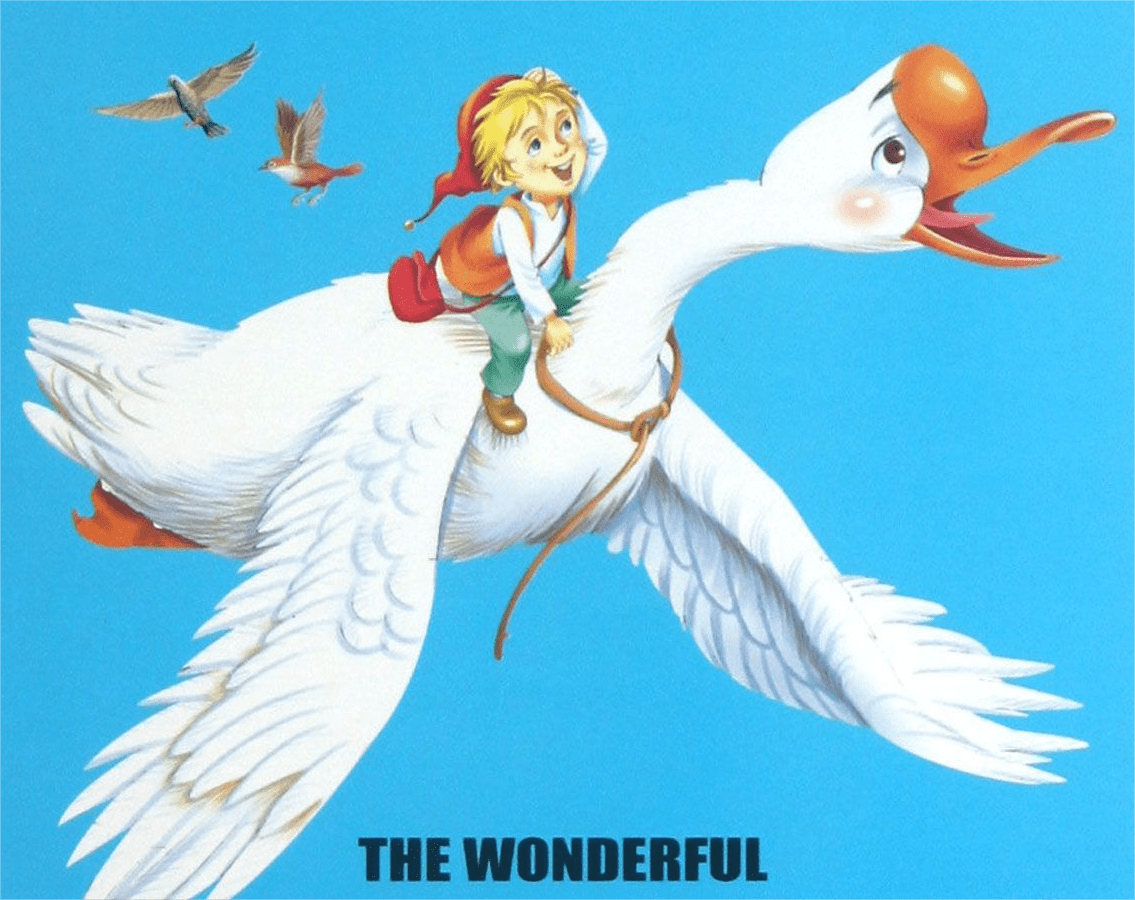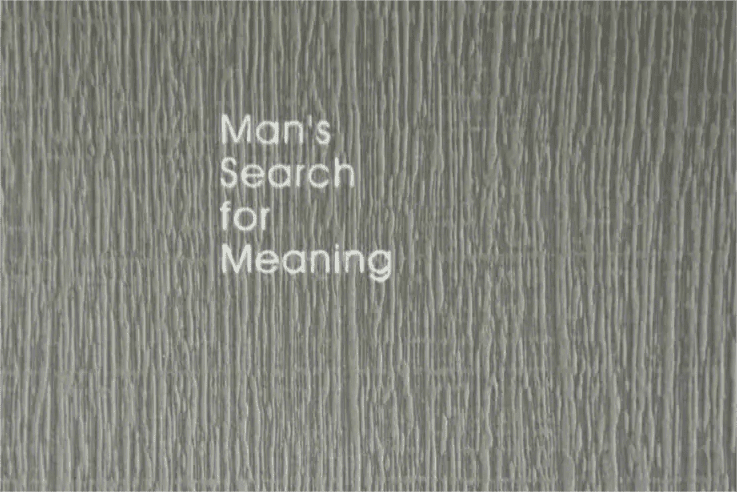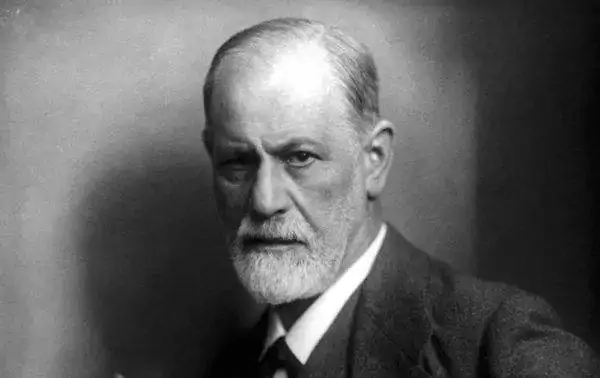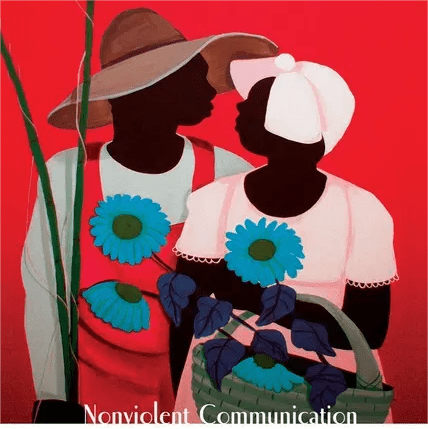“The wonderful adventures of Nils” is a geography textbook written by Swedish female writer Lagerlove in the form of a story for primary school students. It is not only popular in Sweden, but also became a classic fairy tale that swept the world and won the Nobel Prize for Literature. What is the story?
Nils, the hero of the story, is a 14-year-old boy from an ordinary background. He does not like to study, love to play, and love to tease small animals. One day, he teased an elf and was magically transformed into a small person with the size of a thumb. A group of geese flew by. His big white goose wanted to fly away with the geese. So he hugged the goose around the neck and did not want him to fly. But he forgot that he has become a thumb big little man, so he on the back of the big white goose, follow the goose lasted 8 months, see the landscape of the motherland, understand a lot of Swedish geographical knowledge, experienced a lot of adventure stories, return to the original state after returning home, become a brave to correct mistakes, sensible, caring good boy, also got a nickname thumb.
Since this book is a geography textbook, where is the geography knowledge? How does the author integrate the rich geographical knowledge into the interesting fairy tale?
Example: When Neels first looked down from above and saw a large square of gingham, he learned from the kind goose that it was the Snakon Plain. And the neat houses and ploughed fields, when viewed from above, did look like a riot of gingham, and gingham was the fabric often worn by children.
Here, the author cleverly combined the geomorphic features of the southern Swedish plain with the children’s familiar gingham cloth, and used aerial photography to tell the children geographical knowledge, so that the children remember the features of the plain.
One day, Niels, riding on the back of a big white goose, had an accident while flying over Stockholm, the capital city of Sweden. Niels fell into the lake near Stockholm by accident and was scooped up by a fisherman and sold to a lonely old man who played the violin for tourists in the park.
One day, an old gentleman came to the park and told the old artist about how the city of Stockholm had developed, how it had built castles and churches from deserted islands, how it had built beautiful parks and residential areas, and even filled up part of the strait, and finally became the national center of Sweden.
The geography lesson made the old artist excited. The old man was the king of Sweden, who was visiting in secret. The author Lagerlove enrolls the king of Sweden as a geography teacher.
In addition to geographic knowledge, the main significance of The wonderful adventures of Nilsis to teach children how to become healthy. Neels started out as a troubled boy who had many shortcomings and loved to tease small animals, mainly showing that he was self-centered and did things without considering others’ feelings. But when I came back from this trip, I learned to put myself in someone else’s shoes.
Then you must be wondering, what happened to Niels when he changed so much? It turned out that Niels had met a good teacher, Aka, the leading wild goose who often exchanged ideas with him. With Aka by his side, he unconsciously learned to put himself in other people’s shoes.
So let’s see what Akar does with his life? How do you put yourself in other people’s shoes?
The story takes place between Aka and an eagle. Wild geese and eagles are natural enemies, so Aka doesn’t like the eagle very much, even some hatred. Once Akar flew to an eagle’s nest and found a baby eagle that had lost its mother and father and was starving. Akar thought that just because he was an eagle, he could not deprive him of his right to live, so he adopted him and named him Argo. Argo is raised as his own child, but when he grows up, Argo gradually shows the nature of an eagle and wants to be a real eagle again.
Arca could not accept this fact and threw Argo out of Dayan’s team. Much later, when he heard that Algo had been captured by humans and was being kept in a cage at the zoo, he suddenly realized that he would not be happy if he were locked in a cage with the poultry, let alone the eagle, who was prouder of character than any other animal. Therefore, Akka thought that geese have the habits of geese and eagles have the lifestyle of eagles. Why should we force eagles to live the life of geese? As soon as Arca realized this, he set out to save Argo.
As you can see here, Akkar puts himself in his shoes twice, making rational decisions each time. Niels is lucky to have such a good teacher around him.
Geese are more likely to eat humans than eagles, so Akar initially refused to accept humans in geese’s group, but when he saw Nils’ tiny, pathetic appearance, he agreed to take them in. Finally, Akka kindly reminded them that the most suitable habitat for eagles at night is ice, but not suitable for humans and poultry, and hoped that they should prepare early. Here again reflects how understanding Aka is! Get used to thinking in the other person’s shoes.
At the end of the story, the leading goose, Aka, leaves a parting message: “Thumb, if you’ve learned anything good from us geese, it’s that humans shouldn’t take the whole earth for themselves. You have so much land that you could have given away a few bare rocky islands, shallow lakes, and marshes, and a few wild hills and remote forests, to give us poor beasts a place to live in peace, and if man had the conscience to understand that birds like us need a place to live, That’s all right.”
This paragraph is also a transposition of thought, the author borrowed from the mouth of Aca, to tell the author’s own attitude towards wildlife protection.
After reading this story, I think of our own life and work, in the relationship with their friends, family, colleagues, customers, we should always put ourselves in the shoes of others, do not do to others as you would like to do to yourself. If we can think in this way, we may be much happier as human beings.
Mind reading method:
1. At the end of the story, the author herself appeared and wrote that she met Thumb and learned from Thumb’s mouth about his adventure, which inspired the creation of this story. The author was inspired by her conversation with the hero of the story. It’s very creative.
2.In the story, there is a villain named Mills, the fox Mills, who follows Arca and Nils all the way, setting up various obstacles and causing a lot of pain and annoyance. But if you think about it the other way around, it’s because of the villain that the story moves forward. It’s a bit like when we play checkers, when the other team puts an obstacle in front of you, if you are good at chess, you can take advantage of the obstacle and skillfully jump over it. And if we look at it, we’ll see that a lot of stories are driven by this, by having villains in the story. And with that in mind, when
we’re writing our own stories, we can apply that to the structure of the story.






